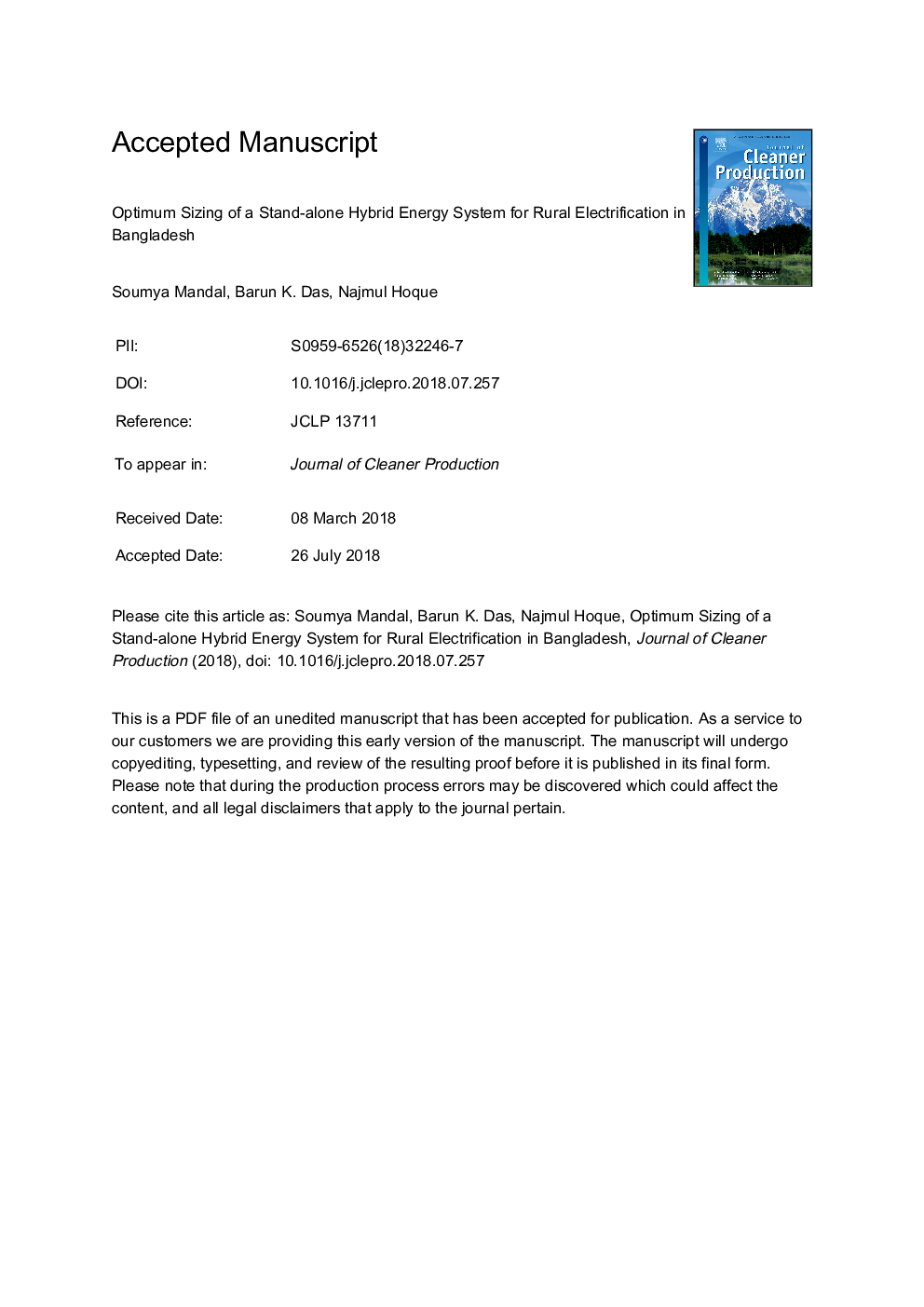| Article ID | Journal | Published Year | Pages | File Type |
|---|---|---|---|---|
| 8092990 | Journal of Cleaner Production | 2018 | 42 Pages |
Abstract
This study investigates the potential application of hybridized energy system (i.e., PV/Wind/Diesel) with battery storage in the northern region of Bangladesh. A techno-economic feasibility of different system configurations is evaluated and an optimized system is selected using HOMER (Hybrid Optimization Model for Electric Renewable) software. The hybrid system is optimized to meet a remote stand-alone village community's load demand of 242.56â¯kWh/day with a 51.52â¯kW peak load demand. The result of this study indicates that the optimized hybrid system consists of 73â¯kWâ¯PV arrays, a 57â¯kW Diesel generator, a 387â¯kWh nominal capacity battery bank, and 28â¯kW inverters have the minimum Cost of Energy (COE) of 0.37$/kWh and the Net Present Cost (NPC) of $357,284. The outcome also indicates that the optimized system reduces CO2 emission by around 62% in comparison with the kerosene used in a current situation and 67% with the grid connected system. Furthermore, the Life Cycle Emissions-LCE (kg CO2-eq/yr) production is considerably lower in PV/Batt/ICE system than the other system configurations. However, this system has a lower Duty Factor (DF) compared to Wind/Batt/Diesel and Batt/Diesel based system. Although this system is not comparable with the grid tariff, the proposed method is economically feasible than solar micro utility system, Wind/Batt/Diesel system, and Diesel generator only system. Additionally, the article discusses the social and economic benefits of implementing the hybridized system along with their barriers and challenges.
Related Topics
Physical Sciences and Engineering
Energy
Renewable Energy, Sustainability and the Environment
Authors
Soumya Mandal, Barun K. Das, Najmul Hoque,
